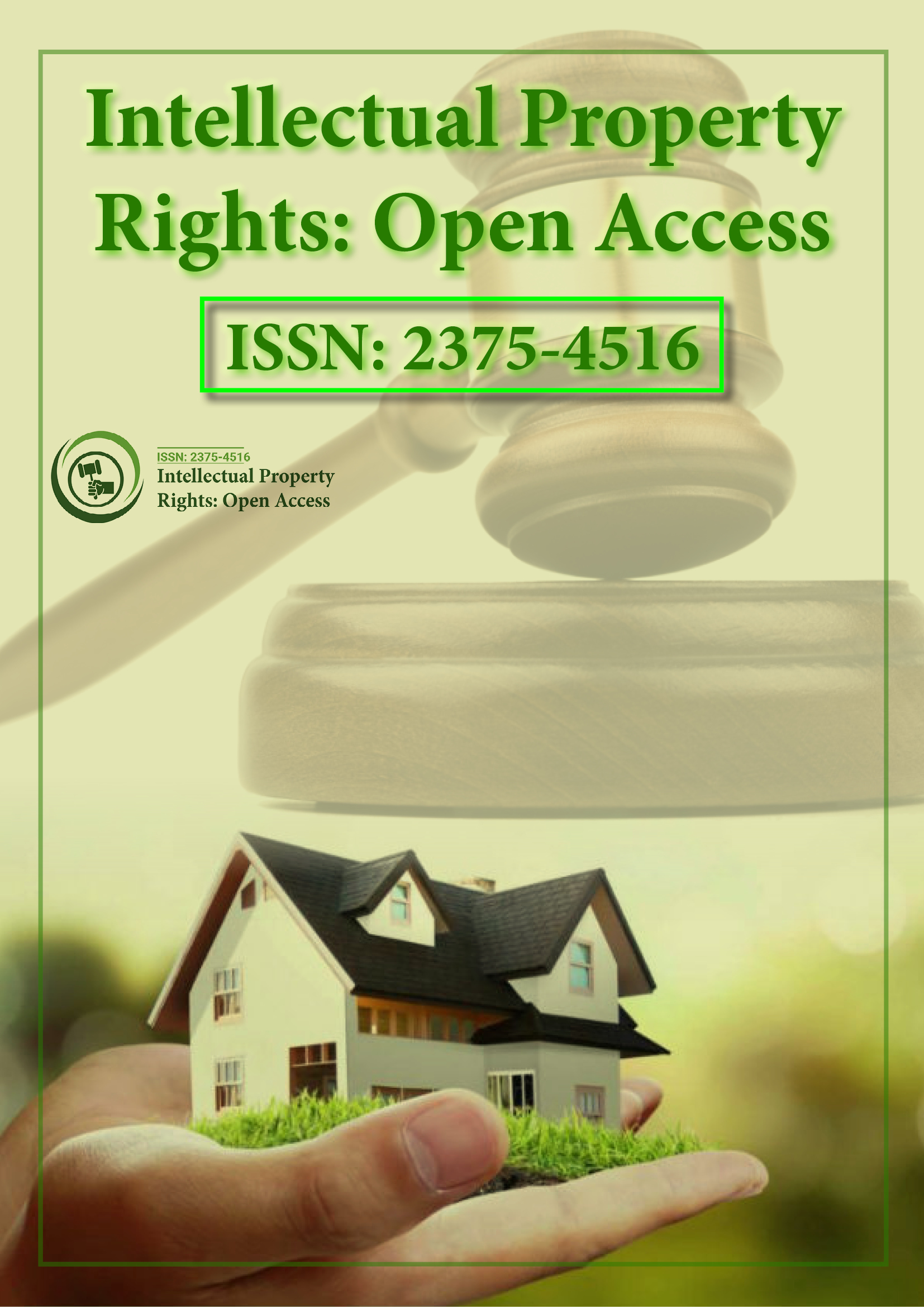Indexed In
- Open J Gate
- RefSeek
- Hamdard University
- EBSCO A-Z
- OCLC- WorldCat
- SWB online catalog
- Publons
Useful Links
Share This Page
Journal Flyer

Open Access Journals
- Agri and Aquaculture
- Biochemistry
- Bioinformatics & Systems Biology
- Business & Management
- Chemistry
- Clinical Sciences
- Engineering
- Food & Nutrition
- General Science
- Genetics & Molecular Biology
- Immunology & Microbiology
- Medical Sciences
- Neuroscience & Psychology
- Nursing & Health Care
- Pharmaceutical Sciences
Commentary - (2022) Volume 10, Issue 3
Lifecycle of Societal Trademark Protection and Trademark Value Indications
Arora Matthey*Received: 20-Jul-2022, Manuscript No. IPR-22-17777; Editor assigned: 25-Jul-2022, Pre QC No. IPR-22-17777(PQ); Reviewed: 08-Aug-2022, QC No. IPR-22-17777; Revised: 16-Aug-2022, Manuscript No. IPR-22-17777(R); Published: 23-Aug-2022, DOI: 10.35248/2375-4516.22.10.207
About the Study
A trademark is a form of intellectual property that identifies goods or services as coming from a specific source and sets them apart from those offered by other parties. The owner of a trademark may be an individual, a company, or another legal body. A trademark could be found on the product itself, on a label, a voucher, or a box. Sometimes, trademarks used to distinguish services are referred to as service marks. Under the rule of Henry III, the first law governing trademarks was enacted in 1266, mandating all bakers to adopt a distinguishing symbol for the bread they sold. The late 19th century saw the emergence of the first contemporary trademark regulations.
The world's first complete trademark system was established in France in 1857. The Trade Marks Act of 1938, which permitted registration based on "intent-to-use," introduced an examinationbased process, and established a system for application posting, changed the system in the United Kingdom. The 1938 Act, which served as a model for legislation in other nations, also incorporated novel concepts as "related trademarks," "license to use the system," "defence mark systems," and "non-claiming right systems." Global Brand Database defines "searching trademarks and other signs" as. With marks registered under the Madrid System of the WIPO, our International Brand Database offers simple access to ended 28 million records from numerous international and national sources.
Search for trademarks, appellations of origin, and official insignia using the database. Typically, blacksmiths who forged swords in the Roman Empire are cited as the first trademark users in trademark treatises. Other well-known brands with a lengthy history of use include Stella Artois, which dates back to 1366, and Lowenbrau, which dates back to 1383 and claims use of its lion logo. Under King Henry III's rule, the English Parliament enacted the first trademark law in 1266, requiring all bakers to use a distinguishing mark on the bread they sold. The late 19th century saw the emergence of the first contemporary trademark regulations.
The "Manufacture and Goods Mark Act," which was enacted in France in 1857, It created the first extensive trademark system in history. Imitating a trade mark "with intent to defraud or to enable another to defraud" is a crime in Britain, according to the Merchandise Marks Act of 1862. The Trade Marks Registration Act, which was passed in 1875, made it possible for trademarks to be formally registered at the UK Patent Office for the first time. Beginning on January 1, 1876, trademark registration was considered to be the first step in establishing ownership of a trademark. A registrable trade mark was described in the 1875 Act as "a device or mark, or the name of a person or a firm printed in a particular and characteristic style; a written signature or a duplicate of a written signature of a person or a firm; or a distinguishing label or ticket." In the US, Congress first tried to determine a federal trademark regime in 1870. This statute is speculated to be an associated exercise of Congress' Copyright Clause powers. However, the Supreme Court struck down the 1870 statute in the Trade-Mark Cases afterward within the decade. In 1881, Congress passed a replacement trademark act, this point per its Commerce Clause powers.
Conclusion
A trademark identifies the complete owner of a specific product or service. As an example, Bully land obtained a license to provide Smurf figurines; the Plaything Cluster purchased a license from Lucas film to be allowed to launch plaything Star Wars; TT Toys could be a manufacturer of commissioned rideon duplicate cars for youngsters. The unauthorized usage of toy emblems by manufacturing and mercantilism counterfeit trade goods is thought to be complete piracy. The owner of a trademark might pursue legal proceedings against trademark infringement. Most countries need formal trademark registration as a precondition for taking this kind of action.
Citation: Matthey A (2022) Lifecycle of Societal Trademark Protection and Trademark Value Indications. Intel Prop Rights.10:207.
Copyright: © 2022 Matthey A. This is an open access article distributed under the terms of the Creative Commons Attribution License, which permits unrestricted use, distribution, and reproduction in any medium, provided the original author and source are credited.
